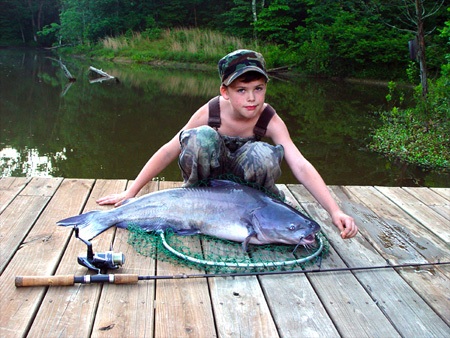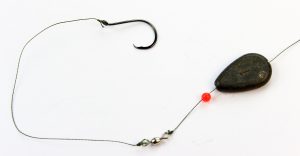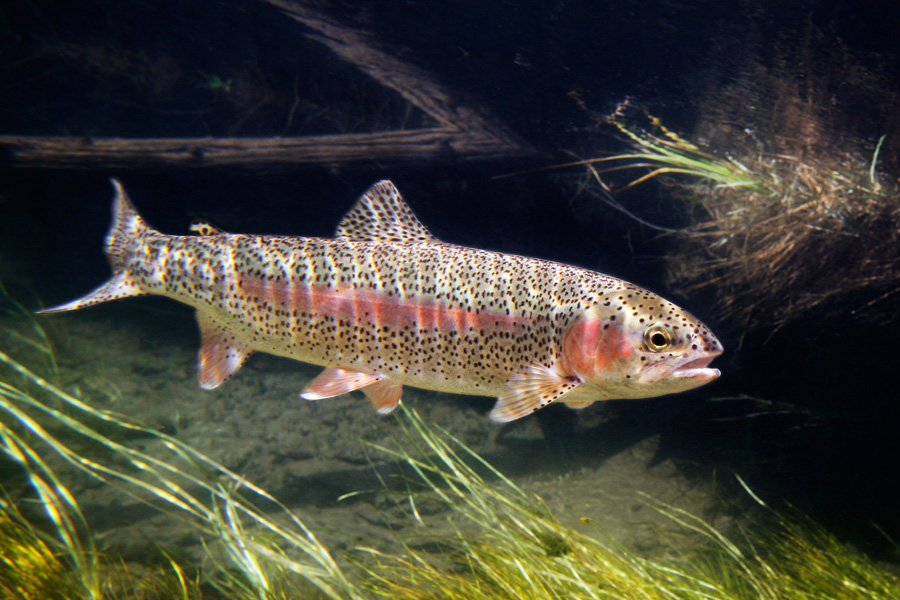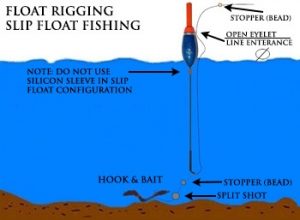 Whether you’re an avid fisherman that grew up fishing your entire life, or you happen to be looking for another outdoor activity to keep yourself and children entertained, understanding how to teach your children to fish can be one of the most rewarding experiences of their lives.
Whether you’re an avid fisherman that grew up fishing your entire life, or you happen to be looking for another outdoor activity to keep yourself and children entertained, understanding how to teach your children to fish can be one of the most rewarding experiences of their lives.
These days children are consumed by electronics. While they can help in locating fish, it’s important to note that getting you and your children out of the house can be a boost in morale and overall happiness.
It’s important to keep your fishing trips short, you want the experience to be positive and rewarding. Staying for a couple of hours, multiple times a month, instead of one long trip can keep your children interested in fishing longer.
Get yourself and your children addicted to the bite!
Scouting the fishing hole first.
Growing up in central Florida, my father knew everywhere to go and what times of the year. It was his job as a parent not just to keep me entertained, but also to get me addicted to a positive activity that wouldn’t break the bank. In fact, we were so good at it, fishing offset the cost of fuel to get there by filling our freezer with a healthy meat for our family.
At different times of the year we could be found on the coast targeting flounder, trout, red fish and snook. During the winter months we would add Specs, or Crappie into the mix from surrounding lakes. Throw in striped bass from Rodman Dam that ranged in the 2 – 5 lb range and all I wanted to do as a kid was go fishing. To hell with school, or hanging out with friends. I would spend most of my time in my father’s garage watching and learning how to build the fishing tackle that we would eventually use to fill our freezers and tire my arms.
These days, with the invention of the iBobber Fish Finder & other’s, scouting can be done easily. Attaching a $100 fish finder to the end of your line before you setup, and having your child throw it out and reel it back in slowly will give you a basic layout of the surrounding area and whether or not any activity can be seen.
It can also give you a target depth to ensure the quickest results. Children, and people overall are less and less patient in today’s digital age. It’s important to make the experience as fun as you can.
A simple tool to find fishing and or boating spots near you is takemefishing.org punch in your address and look at the various places around the surrounding area.
Safety First and Foremost: Things to talk about while your waiting
If your on the water in a boat, or even a local fishing pier. Staying safe is important. Buying a life vest, could be the difference between a safe fishing trip and a disastrous one. Show your children that they aren’t the only one’s wearing it. Make it a cool experience, not a hassle.

Some people think that because hooks have barbs they should only be handled by adults. However, teaching your children how to properly hold and bait their hook will give them a positive skill set and lead to more independence.
Explain to your children what happens and what they should do when the line goes tight on a bottom rig, or when the bobber starts moving. Show them how to set a hook, explaining that like anything it will take time and years of practice to learn.
Teaching your child how to hold a fishing rod properly will set them with the best chance of success. Explaining this while your scouting the area with a portable fish finder like the iBobber can be your best bet, since there won’t be anything biting. It will however, give your child more experience in reeling, and casting.
Artificial Baits and when to use them
Using small 1/32 – 1/8 ounce jigs, or soft-baits are a way to keep kids engaged. Teaching them to slow reel or bouncing a jig slightly off the bottom can keep their attention. You can also place a jig under a bobber and slowly move it along, gently twitching it. Teaching your children to think for themselves and try different tactics will result in more Independence and critical thinking. Give them several options to choose from, and while they are trying one, you try another. Whoever starts catching fish first can be a bragging right, especially when it’s the children.
Make sure to boost their confidence with each fish caught. Take pictures and frame them.
Landing your Child’s first Fish
Teaching your child how to slowly play a fish takes patience and some trial and error. Stop when the fish is at the water’s surface. Encourage your children to land the fish by themselves after the first couple of times, unless they specifically ask for help. Giving positive words of encouragement for them doing it independently while you’re working on fishing for yourself will result in higher self-esteem and confidence in your children.
3 Species to Target for Quick Results
Any local bait and tackle store will tell you, going after smaller fish to begin with will be a rewarding experience. The likelihood of landing a fish is greater when you target species that are more abundant. Everyone wants to catch the biggest bass, salmon, or pike their first time out. However, targeting species like Crappie, Bluegill or Rainbow Trout to begin with will ensure you and your children have the best fishing experience possible. Ask around your local fishing stores for the most productive place to take kids fishing.
Catfish
Catfish is another easy fish to target. Especially in the south eastern United States. Head to the local grocery store and ask for some fresh beef livers. A simple 1/8oz lead, split shot & mustard hook about 1 ½ feet apart will get you started. The cost is minimal and the catch can be steady at the right time. Keep your bait in the water for a prolonged period. The scent of your bait will begin to travel around the river, or lake your targeting drawing the fish in.

Simple Catfish Rig
Typically, catfish bite better at night. Going for a few hours after school & work with dinner in hand with some lawn chairs can lead to a better connection with your children.
I don’t recommend keeping saltwater catfish, but they are one of the most prolific fish on the east coast. If your looking for easy prey, targeting saltwater catfish can be exciting at first. After you’ve unhooked the 10th one, it can be a little annoying. However, if your goal is to go catching, instead of fishing, targeting this species is your best bet.
Freshwater Catfish are much better eating. They can be cleaned relatively easy, and when battered and dropped in hot grease eat very well.
When liver doesn’t work, any type of shrimp on the bottom is sure to draw them in. Make sure YOU, the ADULT are handling all catfish. They have a spine on the top fin that will put you, or your child in the hospital if not handled correctly. Teach your child HOW to unhook a catfish successfully, and point the spines out. Don’t ever touch it. Do you have guns in your house? Treat a catfish spine the same way.
- Step 1: Lay the catfish on a flat surface.
- Step 2: Wrap your hand around the belly of the Catfish. Making sure that you are keeping the spines at bay.
- Step 3: Use a pair of plyers, or your hand to pivot the hook out of the catfish’s mouth.

Rainbow Trout

Some area’s including Alaska, Washington, Oregon & and other north-western states have stocked rainbow trout ponds. Landing these fish can be tricky. Typically, you’re looking for the closest drop off to shore. Head to your local Walmart and pickup salmon eggs or rooster tails. You’ll also need a packet of split shots and small hooks. Ask around about the size of trout stocked in these waters. Keep your bobber anywhere from 1’ to 3’ from your hook with a single split shot in between. You’ll want a simple rod and reel with 6lb to 12lb test line. For beginning fishermen I would recommend starting with a spincasting or spinning reel, you’ll want to stay away from baitcasters.
Place one, or two eggs on the smallest hook you can find, and wait for the bite. These fish can be tricky, so don’t snatch, or pull on your line when you see movement.
A simple, 1, 2, 3 counts before tugging gently on the line will yield the best results. Teach your child to keep the line tight, with the rod tip either up, or off to the side. The goal is to pull the opposite way the bobber is moving, creating friction and gently setting the hook. Don’t reel to fast, or horse them in. Take your time and enjoy the fight.
Panfish
Pan fishing can be extremely rewarding when you’re in a densely populated area. Chumming an area with cornflakes, oatmeal and or doughballs can really help increase the action. When pan fishing, you’ll want to use worms, premade doughballs, and or minnows from your local bait store. Use the same setup that you learned above, merely swapping the type of bait your using and or the depth you set your bobber to, depending on your target area.
Catch & Release Rules
Handle the fish your releasing as little as possible. Fish have a slime on them, how much will depend on the area your fishing and the species your targeting. Make quick work of your hook with a pair of needle nose pliers, take a picture for Facebook and the family scrapbook and release the catch quickly to catch another day.
Keep a towel, or cloth nearby to wipe your hands on after baiting your hook, or handling fish. Although for some, it’s just more fun to wipe that fish smell off on our jeans. A sense of pride in the first catch. Although, your home laundry service won’t thank you.
